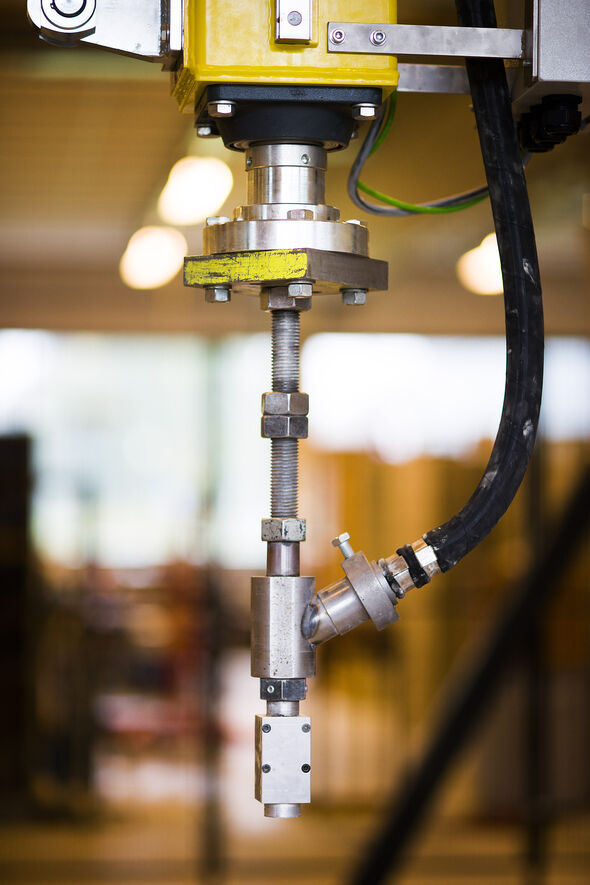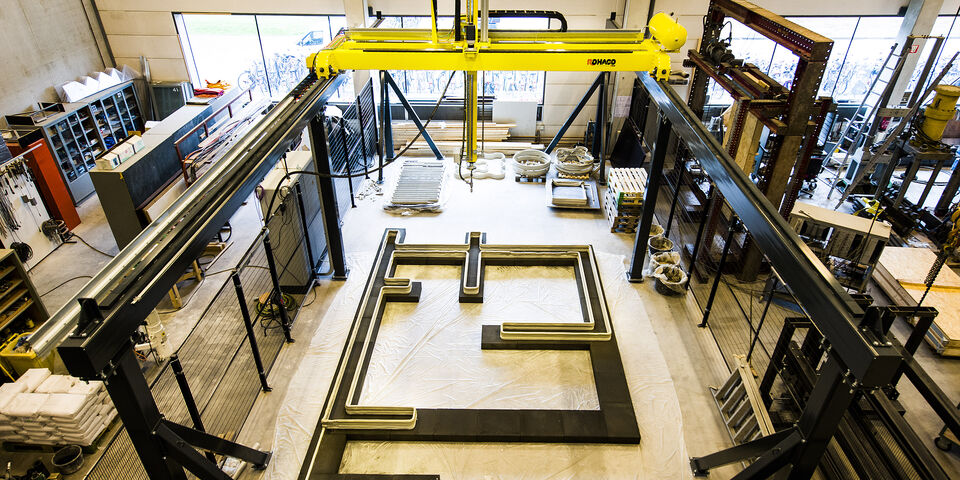Concrete printing with precision
Since this summer the Pieter van Musschenbroek Laboratory of the Built Environment has housed a special contraption: a gigantic printer which can produce concrete structures twelve meters long, five meters wide and four meters high. During the latest Dutch Design Week this concrete printer, which is unique for the Netherlands, already received a great deal of attention, among others during the NOS 8-o’clock news. Now that peace has returned, ‘concrete prof’ Theo Salet and his team face the real challenge: how can they get the most out of the concrete printer?
In theory, the potential is endless: one push on the button makes the concrete printer spit out preprogramed walls with exotic curves, or walls built up from the inside to the outside of layers of acoustic, insulating, superstrong and dirt-resistant concrete. You can print along small sensors, which make it possible to read the condition of the construction. And all of this can in principle be done continuously, because the printer can be operational 24/7.
However, before this stage there are many hurdles to be cleared, as Theo Salet knows all too well. The professor from the Built Environment section Structural Design, who is specialized in concrete constructions, admits that there are still plenty of technical challenges ahead. The first problem that needs to be tackled is the exact composition of the concrete. Indeed, the concrete printer builds up vertical walls layer after layer, whereby a printer head passes through the same path every time, leaving a layer of wet concrete.
“As soon as you get to the fourth or fifth layer, the bottom layer needs to have set, otherwise it won’t be strong enough to carry the weight of the layers on top of it”, Salet explains. “You can use a concrete that sets more quickly, but if it has already set before the next layer is added, that last layer will not adhere properly.” Moreover, there is a risk that the concrete already sets before it has reached the nozzle, which will be a right disaster.
So far, therefore, they have been working with a kind of concrete that needs thirty minutes to set, whereby the printer occasionally took a break to allow the deposited structure to gain strength. That is a time-consuming and hence far from ideal solution, Salet adds. “Fortunately you can play a bit with the composition of the concrete.”
The most unique part is hidden inside a small control unit
The printer head itself can cover any path in space by means of a gantry, a sort of overhead traveling crane that is also used widely in the packaging industry. “The advantage of such a gantry over a folding-arm robot, for instance, is that it is simple to get from one end of a printed structure to the other along the top. In the future we can always decide to suspend a small folding-arm robot upside down from the overhead position for specific applications.”
Impressive though the concrete printer may look due to its dimensions, its most unique part is hidden inside a small control unit. From that unit it is not only possible to set any conceivable printing path for the printer head, but the concrete mixing system can also be controlled from there. Via a web application this can even be done from a distance. Salet: “The control unit also enables us to adjust the speed of the printer head and of the pump to the exact shape that we want to print.”



Discussion